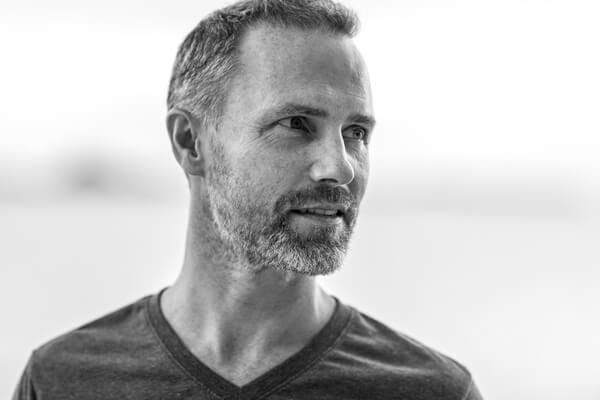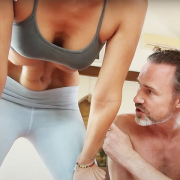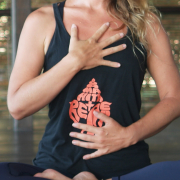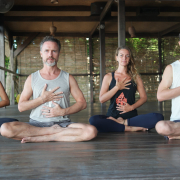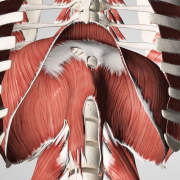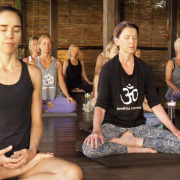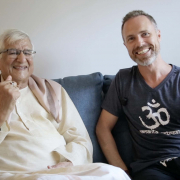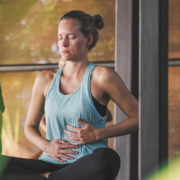 https://samahitaretreat.com/wp-content/uploads/2024/02/basic-breathwork.webp
600
798
Dr. Paul Dallaghan
http://samahitaretreat.com/wp-content/uploads/2024/01/samahita-logo-v2.svg
Dr. Paul Dallaghan2024-02-28 20:34:422024-02-28 20:35:53Navigate the World of Breathing
https://samahitaretreat.com/wp-content/uploads/2024/02/basic-breathwork.webp
600
798
Dr. Paul Dallaghan
http://samahitaretreat.com/wp-content/uploads/2024/01/samahita-logo-v2.svg
Dr. Paul Dallaghan2024-02-28 20:34:422024-02-28 20:35:53Navigate the World of BreathingBreathe Through Your Nose

I’m regularly asked why such a focus on nasal breathing is emphasized. In yoga classes we are encouraged to keep our mouths closed, breathing only through the nose, yet this is highly advised off the mat as well, and for several good reasons. The evolution of our systems to partially separate the passage of food and air is sophisticated and well studied. It distinguishes us from other primates in clear anatomical ways, and yet, it invites the tendency for people to lose track of the best, most efficient way to breathe – through the nose. Let’s explore that further.
Six reasons (with huge pay-offs) to breathe through your nose
1. The nose serves to filter the air that we breathe. Lined with millions of tiny cilia and mucous membranes, it is designed to catch bacteria, dirt and debris that would otherwise travel into the lungs.
2. Air temperature and humidity is also regulated by the nose. If you breathe in excessively cold and dry air, you can actually shock your system. The internal shape of the nose is designed to make the air swirl—that moistens it and regulates the temperature.
3. Breathing through the mouth is inherently shallow, almost sharp and thus has more of an aggressive effect on the nervous system. Nasal breathing triggers greater use of your diaphragm and thus invites a deeper breath and more oxygen into the system.
4. Even more amazing, and rarely considered, is that air drawn in the nose also passes through deep and wide chambers (sinuses) across the face and into the skull—two of which straddle the pituitary gland. This is quite possibly the closest you can get to “massaging” your pituitary, a major gland involved in the release of so many of the body’s functioning hormones affecting stress management, reproduction, and much more. These sinuses are highly charged membranous environments. Mouth breathing completely bypasses such an involvement and will leave you feeling heavier, less clear, more sluggish. The nose breather is calmer and more centered.
5. Cellular respiration, the metabolic process by which your cells produce energy using the oxygen you just breathed in, is directly impacted by the quality of your breath and to some degree by the quantity (oxygen volume) you have been able to breathe in. Therefore your breath is intimately linked to energy production and how you spend that energy. The cells of your heart, eyes and prefrontal cortex area of your brain have the highest level of mitochondria—as Paul termed “little batteries”, though in reality literally ancient bacteria that basically power the human body. Each of these little batteries is pumping out units of energy, or ATP. A single cortical neuron (brain nerve cell) utilizes an unbelievable approximate 4.7 billion ATPs per second in a resting human brain. In other words, you have some expensive machinery to run and so need to fuel it optimally. To breathe poorly (literally), which is through your mouth, is not only an energy loss but poorer performance for your brain, leading to an unfocused and less effective mind, and worse, because your mental energy is dispersed and diluted it leads to continued poorer breathing. Mouth breathing is an expensive practice.
6. In the Ayurvedic sense, shallow and inefficient mouth breathing causes your vata dosha to go off. You become prone to headaches, and your immune system becomes compromised, which opens you to a greater possibility of illness.
In summary, mouth breathing is a lot shorter, sharper, and relies on the diaphragm less. It’s not filtering, not changing the temperature, not affecting the humidity. It’s compromising the immune system and switching on the sympathetic. It’s more energy wasting. You lose more heat, about 20 percent more, when you are breathing out of your mouth. When you are doing certain intense exercises if you are panting in and out of your mouth, it becomes very inefficient. You will find yourself calmer throughout the day having trained the breath to flow through the nose, but also as a practitioner your nasal breath amplifies the effects of your practice, both in pranayama and asana.
Cited study:
1. 2012, Quantitative imaging of energy expenditure in human brain, Zhu et al.
Dr. Paul Dallaghan’s expertise with breathwork, body and meditative practices comes from three sources: (1) three decades of daily dedicated practice and teaching these techniques; (2) uniquely acknowledged in the Yoga tradition by the title of “Master Yogi-Prānācharya (expert in breath)”, following an immersion in the original culture through one-on-one direct training in practice and study of ancient texts; (3) a PhD in doctoral scientific research at a leading US university (Emory) covering both the tradition and science of yoga and breath practices in terms of stress, health and aging. As a result, Paul occupies a unique space to impart genuine teaching and science on the breath, body, and meditative practices, seen as a Teacher-of-teachers and identified to carry on the tradition of Pranayama. His sincere and ongoing role is to teach, write and research, to help put out experienced and authentic information on these areas of how we live, breathe and be, to help people improve their mental and physical health, and live more fulfilling lives.
For more on his background see his bio
More from the Samahita Blog
